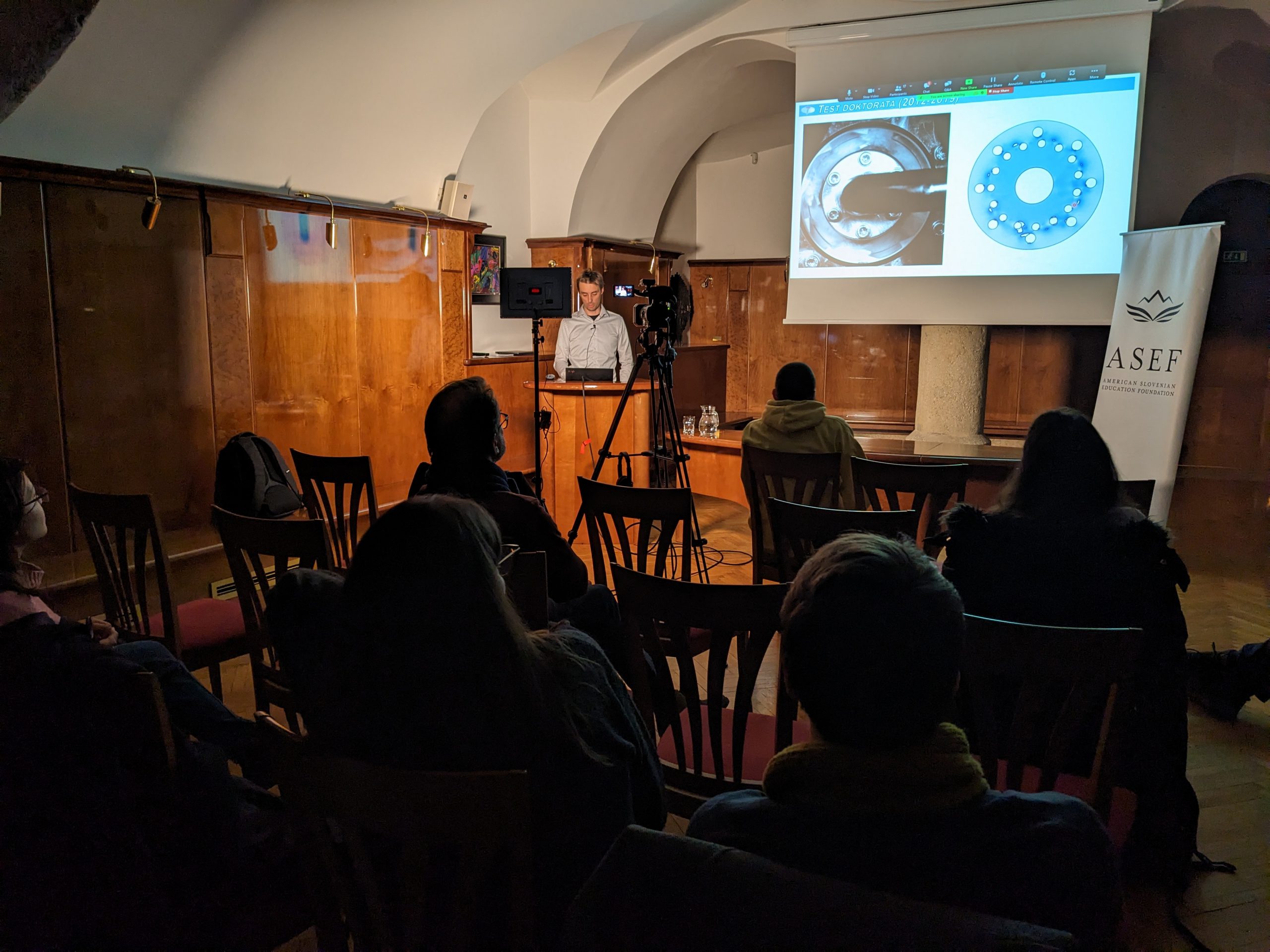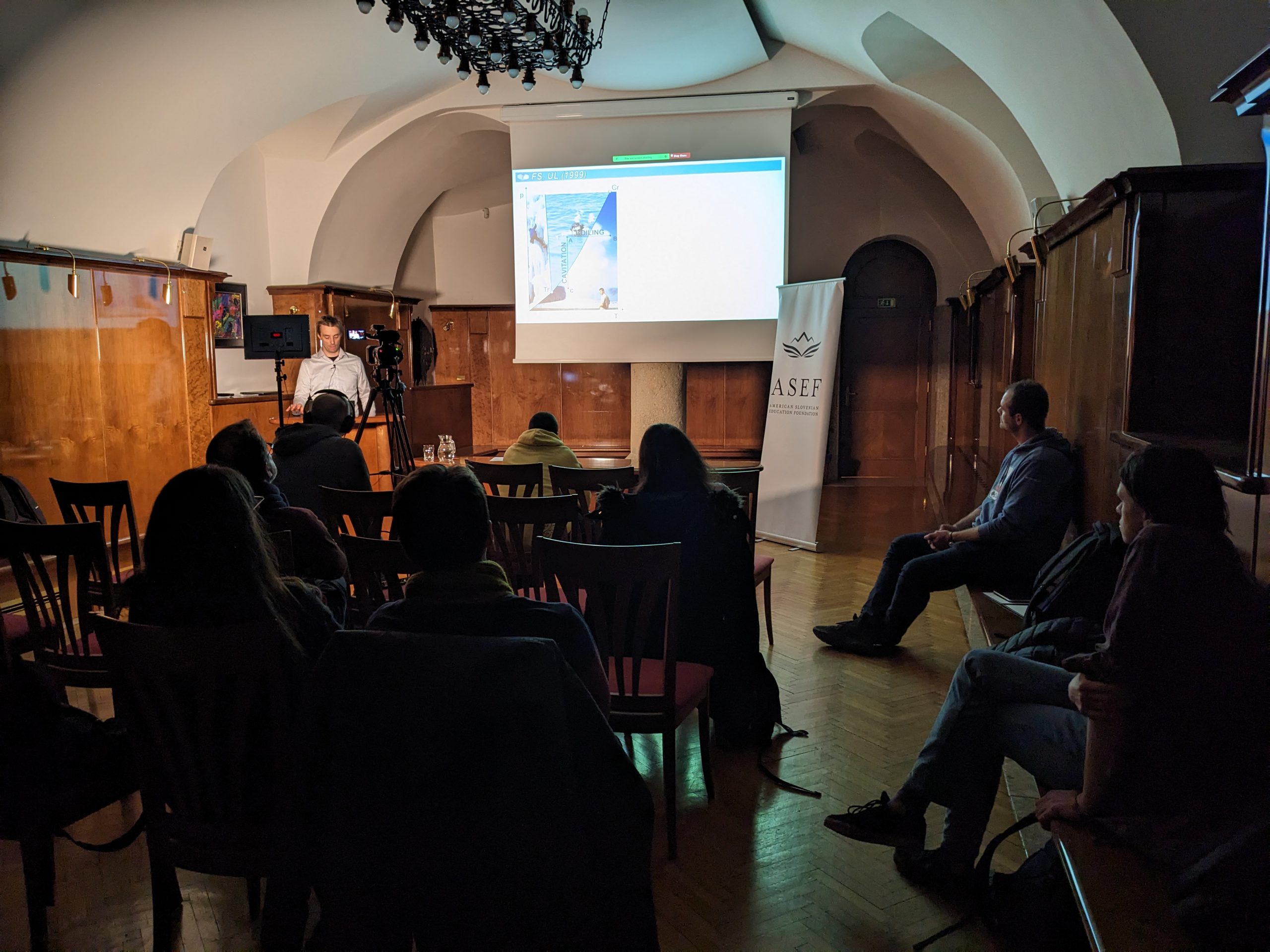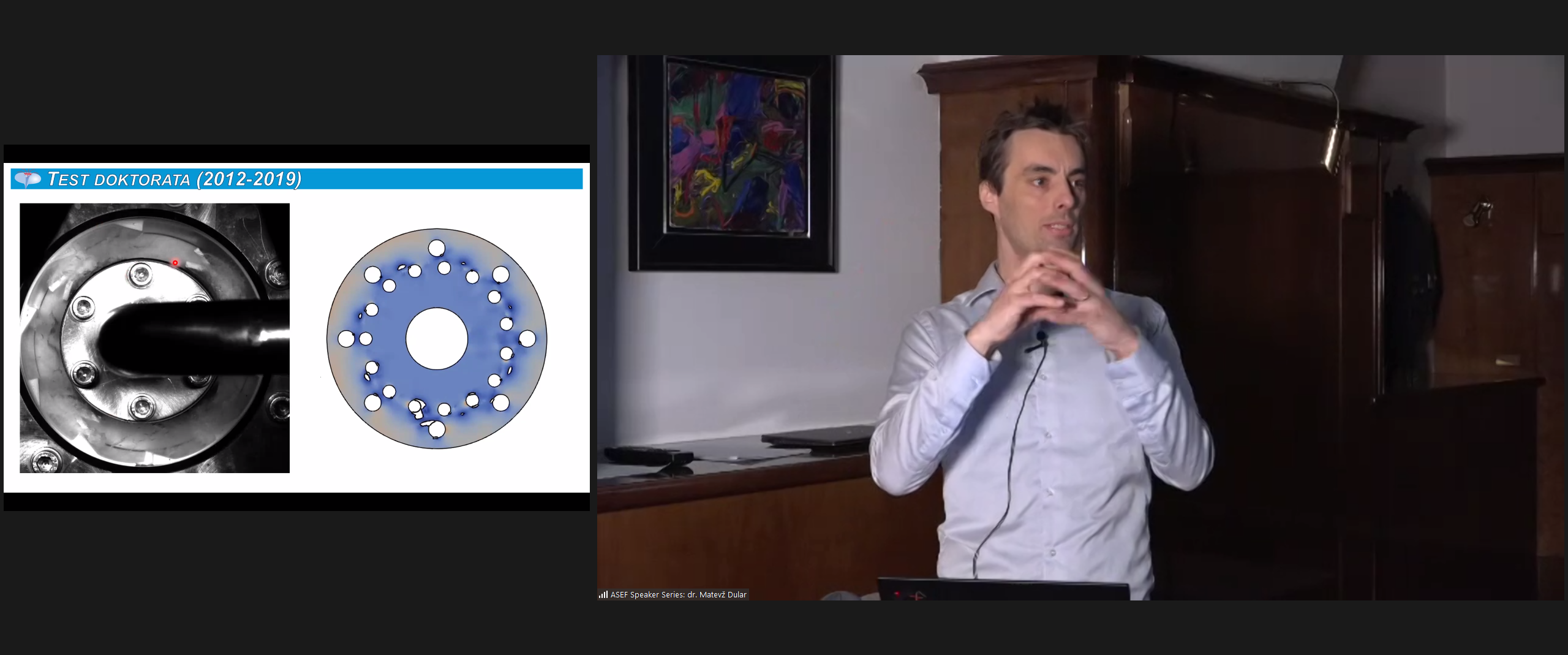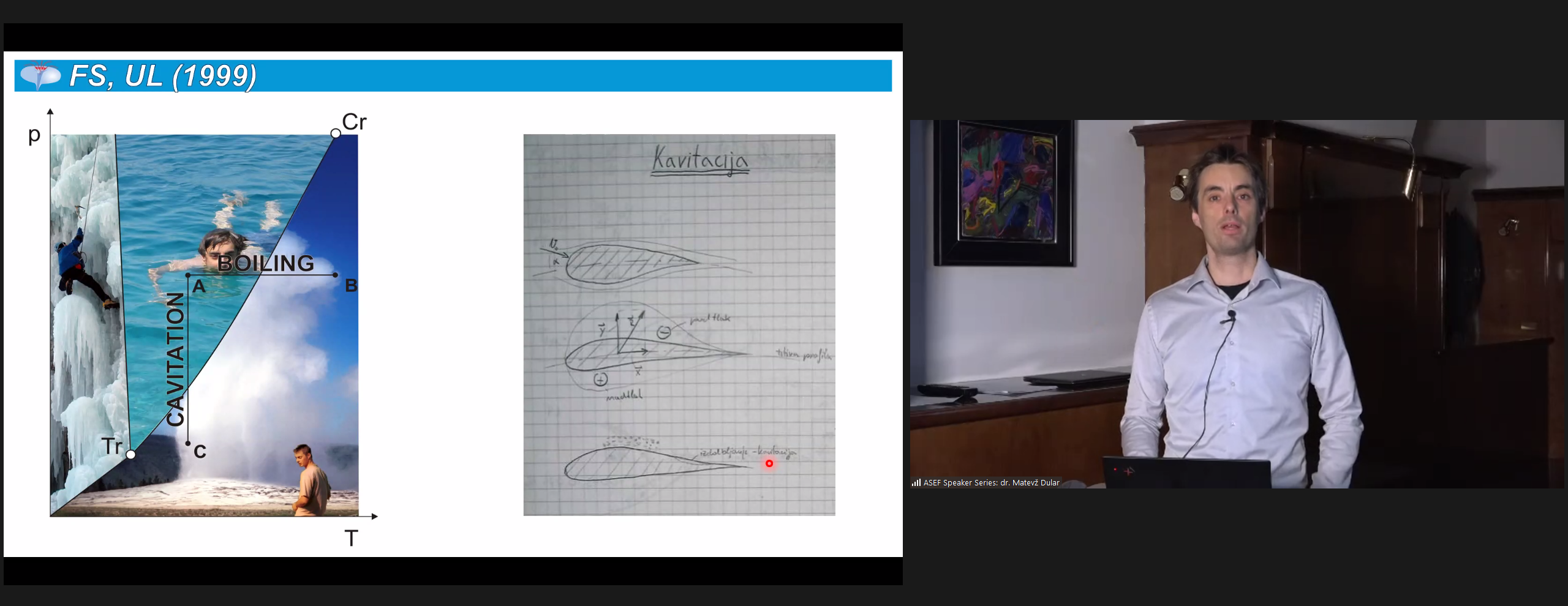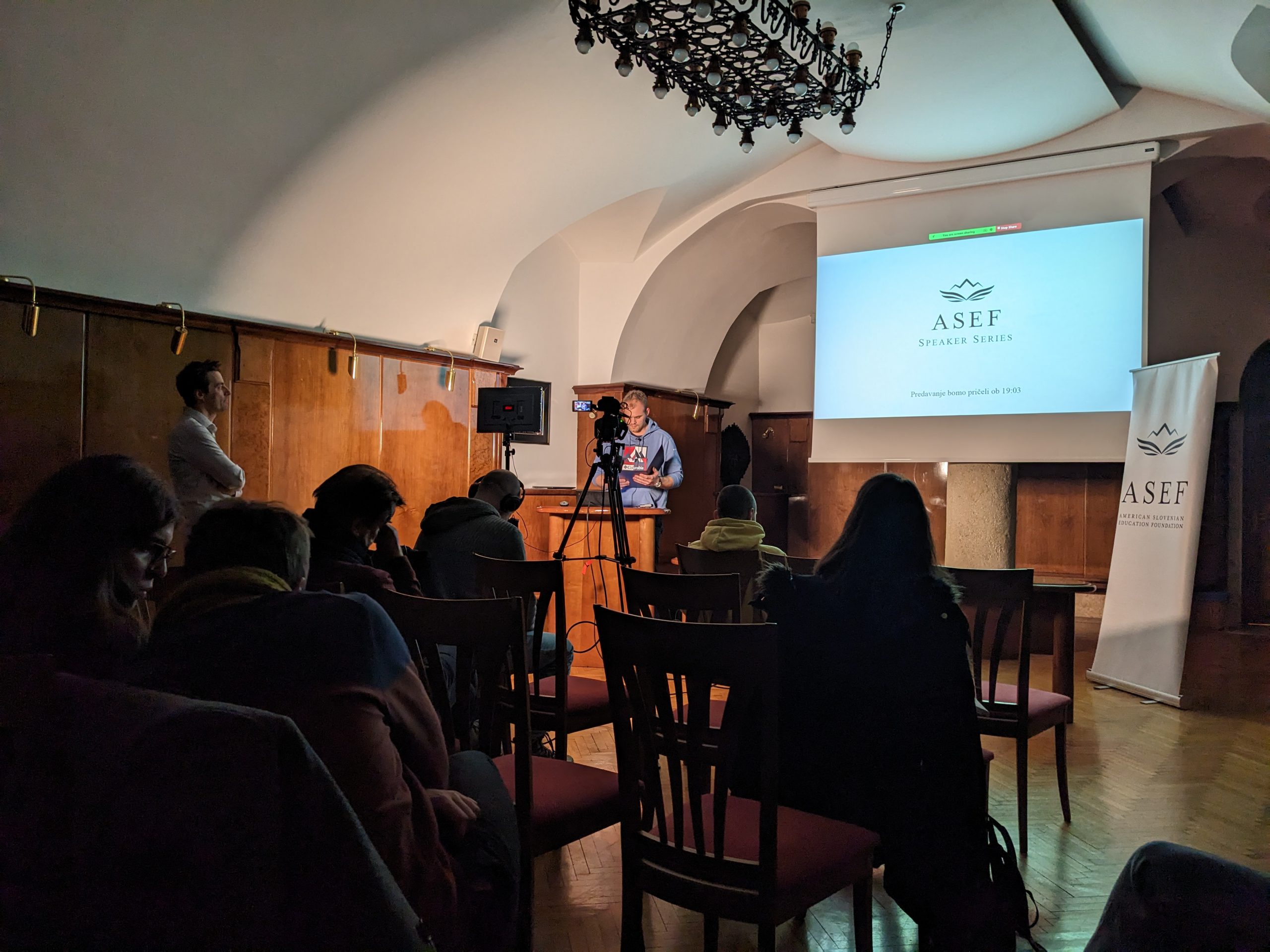
Dynamic Life of Cavitation
On Thursday, February 16, this year’s first lecture of the ASEF Speaker Series took place, where ASEF professors present their research areas and findings. This time, the speaker was Prof. Dr. Matevž Dular, who works at the University of Ljubljana, Faculty of Mechanical Engineering. He is involved in both basic and applied research in the fields of cavitation and engineering fluid dynamics. He graduated from the University of Ljubljana in 2002, continued his studies at the Technical University of Darmstadt, Germany, and obtained his Ph. D. in 2005. He has worked abroad as a researcher and visiting professor for several years. He has led two projects for the European Space Agency (ESA) and in 2017 he was successful in a European Science Council call for proposals for a 5-year basic research project on cavitation and its potential applications in water purification. In 2022, he was awarded a second ERC project to commercialize water treatment technology.
Prof. Dr. Dular started his lecture by describing what cavitation is. Cavitation is a hydrodynamic phenomenon in which bubbles appear in a liquid due to changes in pressure. During his undergraduate studies, the lecturer became interested in cavitation and did research related to it, namely how the size and shape of cavitation clouds affect the damage of different materials. Later, he had the opportunity to do his Ph.D. in Germany at the Technical University of Darmstadt, where he continued his work on cavitation clouds and their formation.
In his bachelor thesis, he hypothesized that cavitation damage requires several conditions to occur simultaneously. The collapse of the cavitation cloud, the formation of a pressure wave, and the formation of a microcurrent are all necessary for cavitation erosion to occur. However, in experiments during his Ph.D., he found that the size and proximity of the cavitation cloud are not directly related to the nature of the damage. Much more important is the shape of the cavitation cloud, which affects the size of the erosion. The lecturer also showed examples of the experiments that led him to these conclusions.
At the end of the lecture, Prof. Dr. Dular showed practical examples of where cavitation could be applied. In his second ERC project, he is working on developing a device where controlled cavitation is used to destroy contaminants and thus help the water purification process.
The event was held in a hybrid format, both in the Prešeren Hall at SAZU and via Zoom, and was moderated by 2022 Junior Fellow Timotej Klemenčič.
The event was organized with the support of the Government Office for Slovenians Abroad and the Office of the Republic of Slovenia for Youth.


